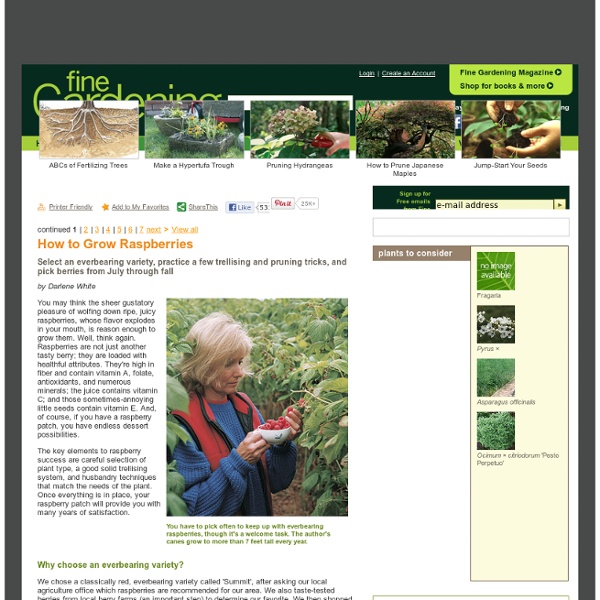Seed Soaking: Tips For Soaking Seeds Before Planting
By Heather Rhoades Soaking seeds before planting is an “old time” gardener’s trick that many new gardeners are not aware of. When you soak seeds before planting, you can significantly decrease the amount of time it takes for a seed to germinate. Let’s look at the reasons for soaking seeds and how to soak seeds. Reasons for Soaking Seeds What happens to seeds when you soak them? The short answer is because your seeds were designed to be abused. Another reason is that, while Mother Nature actively assaults seeds, she also gave those seeds an internal gauge to help them know when they should grow. And lastly, for some types of seeds, they actually contain germination inhibitors that are designed to prevent a seed from germinating inside the fruit. How to Soak Seed Before Planting Seed soaking, at a basic level needs two things: seeds and water. Some methods for seed soaking may substitute the water for slightly acidic solutions, such as weak tea or coffee or even acidic chemicals.
How to grow dill, care and pictures of the herb dill
Dill A multi- purpose herb grown for its seeds and foliage. Dill originates from Eastern Europe and is much hardier than most people think. Fresh, frozen or dried, the ferny foliage and seeds are a tasty flavouring for fish, lamb, new potatoes and peas. Remember to add dill at the end of cooking, because cooking will destroy most of its flavour. It tastes very much like aniseed, so be sparing when adding it to food or it will overwhelm other flavours. Dill is tolerant of most conditions and easy to germinate, so it causes few problems for novice gardeners. Folklore Click here Latin NameAnethum graveolens TypeEdible perennial herb (grown as an annual) Site and SoilSunny site, most soils Plant to Harvest Time3 months Where To Grow Dill Dill will grow well in most soils. Planting and Care of Dill Dill is a perennial and therefore can last several years. The only care required is to keep the plants weed free. Harvesting Dill Container Growing Dill Dill is especially suited to container growing.
Growing Onions
Easy to cultivate with a long storage life, home gardeners are growing onions more than any other vegetable! Records indicate that they were grown in Ancient Egypt, and eventually arrived in Rome and became known as the word onion (from the Latin word UNIO, which means large pearl). Site Preparation: Onions grow best in full sun and deep, fertile well-drained soil with plenty of organic matter. Work in a generous amount of compost prior to planting. Onions are shallow rooted and need constant moisture near the surface. Onions form bulbs in response to day length. How to Plant: You can grow onions from seed, seedlings or sets. Allow 1-4 inches between plants in traditional rows spaced 1-2 feet apart. Harvesting: Allow tops to fall over naturally, then pull bulbs and let them air-cure for two weeks. Insects and Diseases: To help prevent insect and disease damage avoid planting onions in the same area for three years. Seed Saving Instructions: Biennial. Recommended Products:
Four ways to creatively grow your own fruits and vegetables using principles of permaculture
(NaturalNews) Modern industrial agriculture is a disastrous failure, as it defies practically every natural law related to food cultivation, ecological and environmental protection and stewardship, and human nutrition. But there is a new agricultural revolution sweeping the land that is changing the way humans eat and grow food, and its methods are derived from the concepts found in permaculture. Permaculture is basically an all-encompassing term used to identify the strategic and creative ways through which human structures and agricultural systems are unified into harmonious, sustainable entities. As opposed to factory farming systems, which rely heavily on chemical and fertilizer inputs and destroy the environment and human health in the process, permaculture farming systems take advantage of the many unique ways that natural systems work together to complement one another and sustain life. If you have a fairly sizable growing area, you may want to consider creating a mandala garden.
Re-Growing Celery
Did you know that you can grow another complete celery stalk from the bottom piece that you cut off and throw away? This is new to me, too, but I have been doing it this year and it works! I use a lot of celery when cooking and I hope to save quite a bit by re-growing it throughout the spring and summer. When I bring the celery home, I cut the end off first then put the rest into the refrigerator. I usually set the bottom piece on a saucer of warm water overnight to get it started. When I have time, I will take that piece and plant it just like it is, in the vegetable garden with the stalk side up. This is one planted about three days ago. This one was planted about 10 days ago. It will grow a brand new top to be cut and used. I plan to start planting my cut celery bottoms in small pots or trays late next winter so that I have a few dozen to plant out into the vegetable garden in May. I may never need to buy celery again! You can also find Sheryl at Providence Acres.



